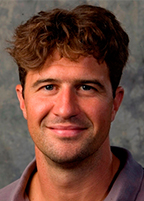
Muir Eaton, associate professor of biology at Drake University, is making a substantial research contribution to the world’s largest database of bird coloration.
Eaton, a longtime bird researcher with an PhD in ornithology, has contributed data on hundreds of bird species to BirdColourBase. An international consortium of 17 research labs in eight countries from three continents have provided information to the database, which holds data on more than 3,000 species of birds.
“Researchers have been accumulating bird coloration data for years, and the idea behind BirdColourBase is to unify that data, in the same way that (for example) the National Institutes of Health’s GenBank provides a database for genetic sequencing information,” Eaton said.
The database is composed of data collected with spectrophotometry, a physics-based approach that provides a scientifically quantifiable method of describing the colors of birds. While two birds may appear similar to the human eye, the use of spectrophotometry helps scientists to record the specific color traits of each bird, including the presence of ultraviolet coloration that is invisible to the human eye — but visible to other birds.
“The process is a bit analogous to the way we study sound through an audio spectrogram, which gives a quantifiable visual representation of the frequency and duration of notes,” Eaton said. “Birds have this world of colors available to them that we don’t see with the naked eye. Spectrometry can capture that invisible information and give us a much more proper interpretation of their coloration.”
“[Eaton’s] dataset is particularly important due to the range of species sampled,” said BirdColourBase lead organizer Than-Lan Gluckman, an evolutionary biologist who is working alongside co-organizer John Endler, an ethologist and evolutionary biologist at Deakin University in Australia. [The project has a Twitter feed, @BirdColourBase.]
At Drake, Eaton teaches courses related to introductory biology, vertebrate biology, ornithology, winter avian ecology, museum curation, and evolution. He also leads a senior capstone experience for students pursuing a major in biology.
Eaton often recruits undergraduate students to assist with his avian research. Recent research involves studying the amount of lead ingested by ducks in county-owned hunting grounds. The presence of lead in waterfowl’s stomachs suggests they continue to ingest lead shot, despite a federal ban that banned lead shot for hunting the birds in 1991.
He also has ongoing research projects on the effectiveness of hunting decoys with different visual schemes, including ultraviolet reflectance, as well as the visual morphology and adaptations across waterfowl species.

